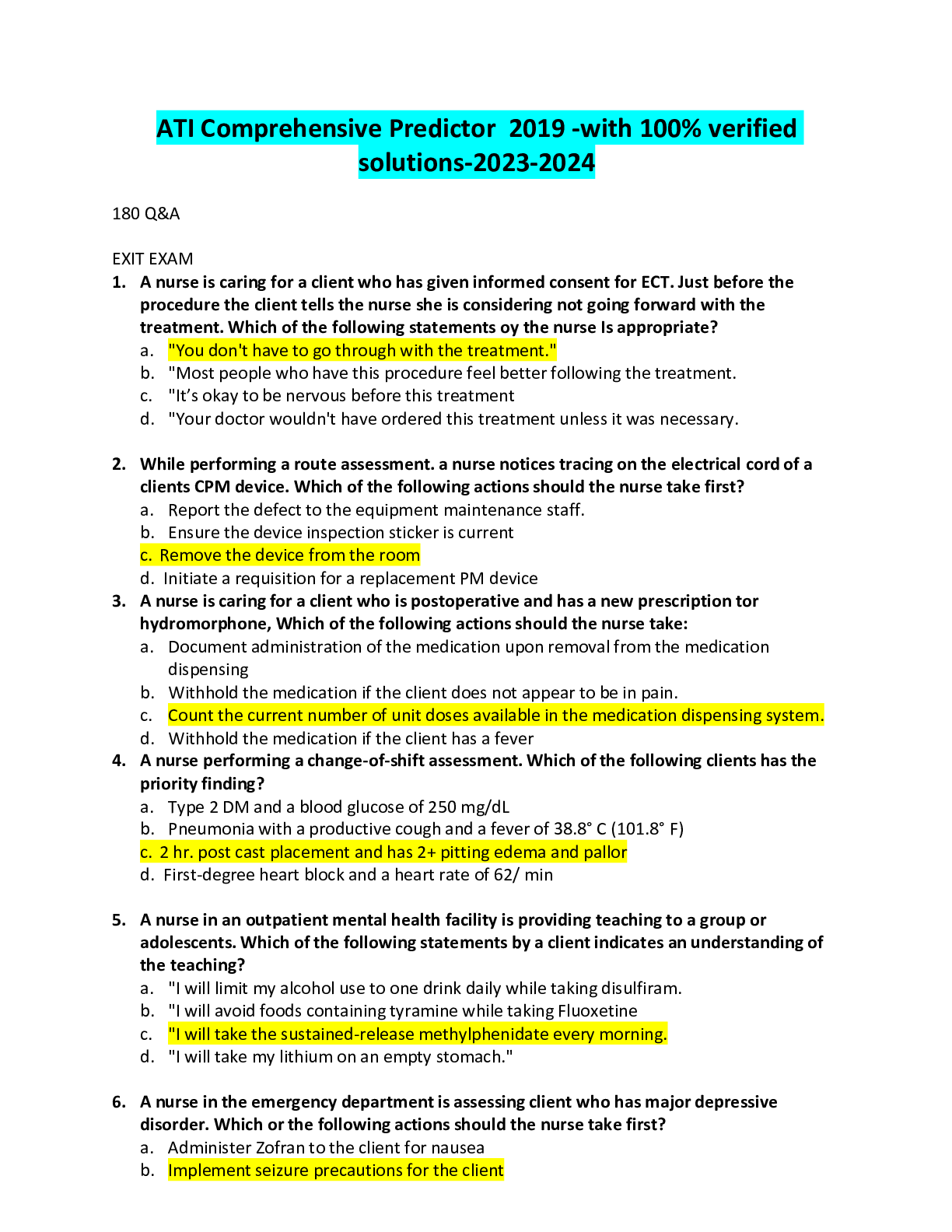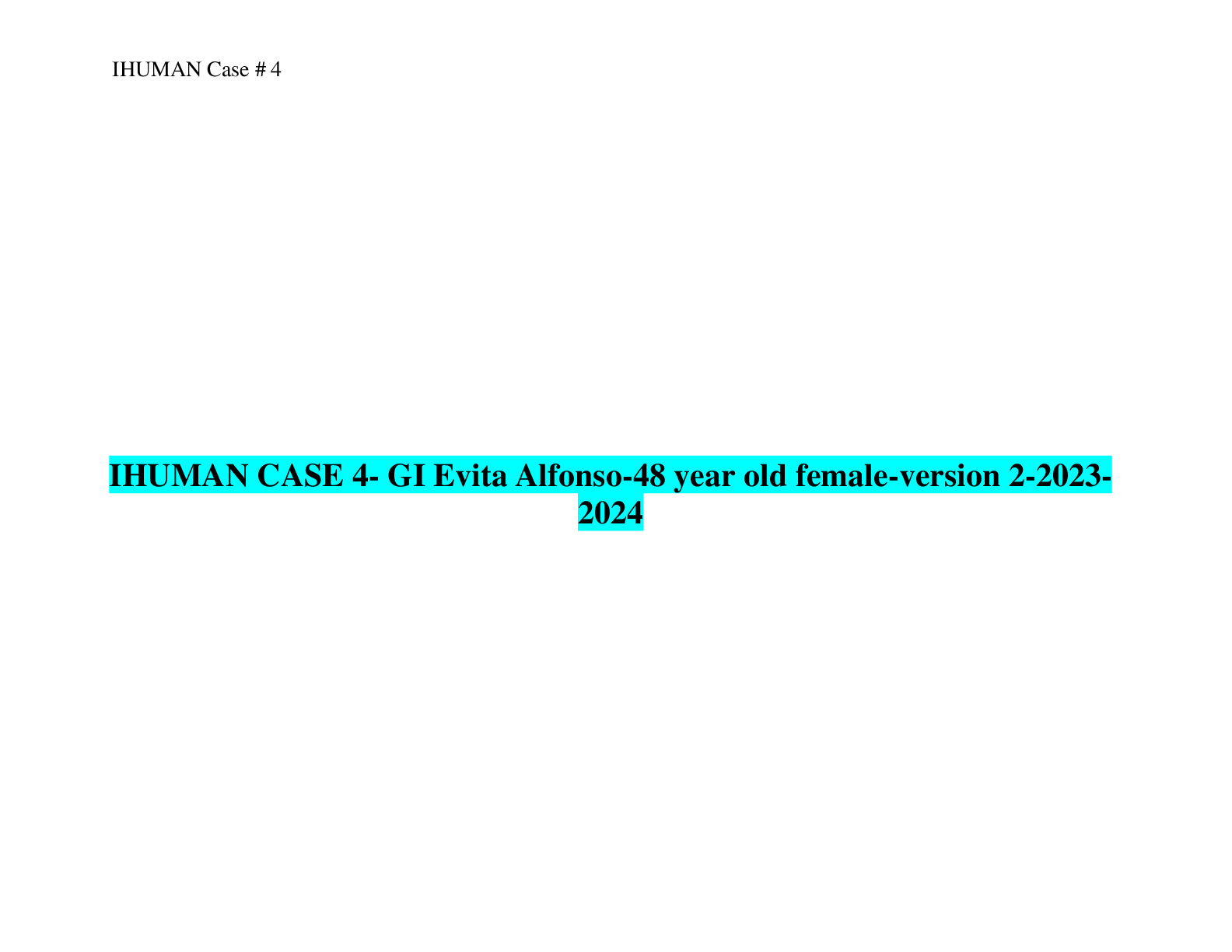NSG 5003- Week 3 Quiz Advanced Patho-graded 100%
Document Content and Description Below
Question 1 options: a)Undergoing mutation that directs the synthesis of proteins to accelerate the rate of tissue proliferation b)Directing synthesis of proteins to regulate growth and to provide ... necessary replacement of tissue c)Encoding proteins that negatively regulate the synthesis of proteins to slow or halt the replacement of tissue d)Undergoing mutation that directs malignant tissue toward blood vessels and lymph nodes for metastasis Question 2 (0.5 points) Question 2 Saved Burkitt lymphomas designate a chromosome that has a piece of chromosome 8 fused to a piece of chromosome 14. This is an example of which mutation of normal genes to oncogenes? Question 2 options: a)Point mutation b)Chromosome translocation c)Gene amplification d)Chromosome fusion Question 3 (0.5 points) Question 3 Saved In childhood neuroblastoma, the N-myc oncogene undergoes which type of mutation of normal genes to oncogenes? Question 3 options: a)Point mutation b)Chromosome fusion c)Gene amplification d)Chromosome translocation Question 4 (0.5 points) Question 4 Saved Which aberrant change causes the abnormal growth in a retinoblastoma? Question 4 options: a)Proto-oncogenes are changed to oncogenes. b)The tumor suppressor gene is turned off. c)Genetic amplification causes the abnormal growth. d)Chromosomes 9 and 21 are fused. Question 5 (0.5 points) Question 5 Saved Two hits are required to inactivate tumor suppressor genes because: Question 5 options: a)Each allele must be altered, and each person has two copies, or alleles, of each gene, one from each parent. b)The first hit stops tissue growth, and the second hit is needed to cause abnormal tissue growth. c)Tumor suppressor genes are larger than proto-oncogenes, requiring two hits to effect carcinogenesis. d)The first hit is insufficient to cause enough damage to cause a mutation. Question 6 (0.5 points) Question 6 Saved Chronic inflammation causes cancer by: Question 6 options: a)Increasing vasodilation and permeability that alter cellular response to DNA damage b) Liberating lysosomal enzymes when cells are damaged, which initiates mutations c) Releasing compounds such as reactive oxygen species that promote mutations d)Increasing the abundance of leukotrienes that are associated with some cancers Question 7 (0.5 points) Question 7 Saved What is the consequence for cells when the functioning TP53 gene is lost as a result of mutation? Question 7 options: CONTINUED.... [Show More]
Last updated: 2 years ago
Preview 1 out of 12 pages

Buy this document to get the full access instantly
Instant Download Access after purchase
Buy NowInstant download
We Accept:

Also available in bundle (1)

NSG 5003 mid term and final exams
NSG 5003 mid term and final exams-including study guides
By Studyrepository 3 years ago
$35.5
9
Reviews( 0 )
$13.00
Can't find what you want? Try our AI powered Search
Document information
Connected school, study & course
About the document
Uploaded On
Apr 29, 2022
Number of pages
12
Written in
Additional information
This document has been written for:
Uploaded
Apr 29, 2022
Downloads
0
Views
94


























